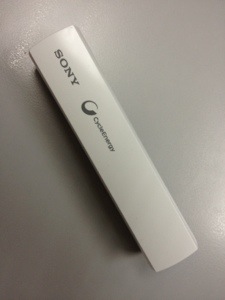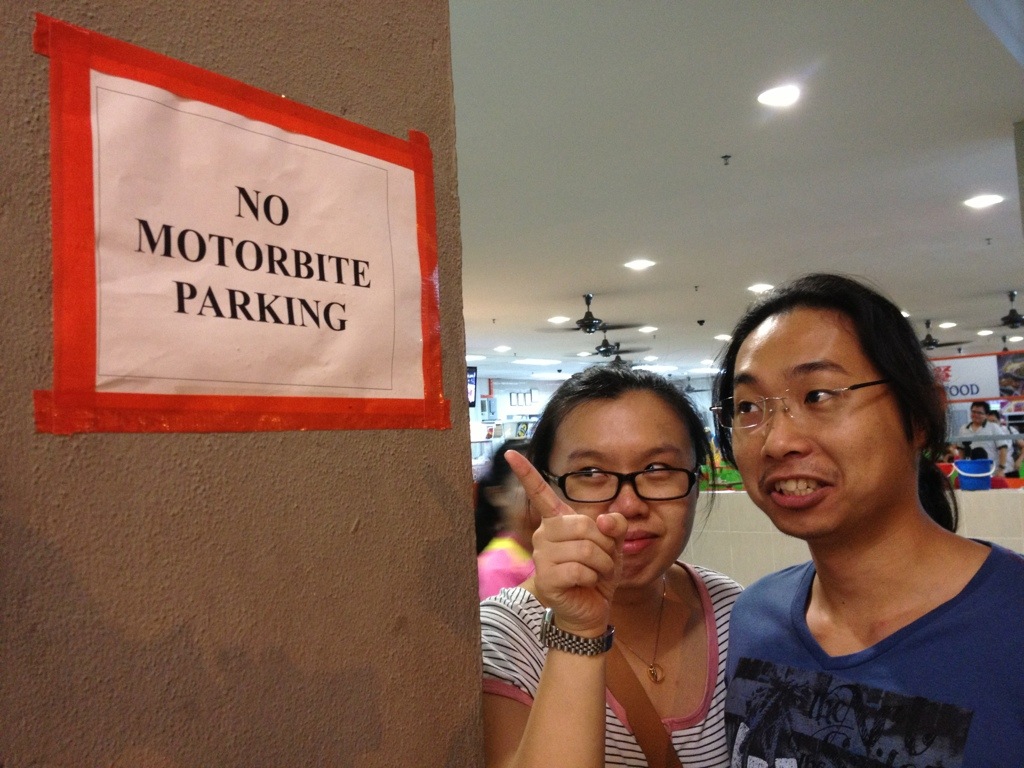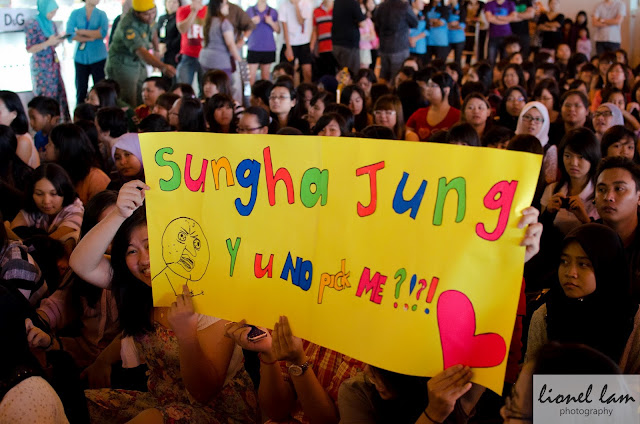Till this very day, I am a firm believer that composition is the key to any outstanding photo, regardless of the camera or gear you use. Saying that your equipment is not sufficiently good for taking breathtaking shots is merely conjuring excuses to be lazy. Needless to say, your camera is just a tool, and you should use your tool to the best of what it allows you to do, limited only by your creative potential.
So what then is this thing calld the K.I.S.S.R principle? It stands for 'Keep It Simple Stupid...Really'. If you have noticed, those pictures we see in photography magazines that have the 'pop' tend to keep composition down to a bare minimum. Needless to say, one of the fast way to learn how to take good picture is to observe how other experienced photographers do it. For a start, a good place to start looking is Flickr. Take time to observe their photos. Besides Flickr, another good place is Facebook, because Facebook is flooded with brilliant examples of horrible photos that are painful to look at. Seriously. What we need its a means of learning from both the best and the worst. Knowing how to take 'horrible' photos is a good start to learn how to avoid the pitfalls of other photographers.
In this article, I will outline some of the compositional techniques employed by experienced photographers. Please not that these are merely aids, and like most rules out there, are meant to be broken. For the purpose of simplicity, I will not go though other compositional aids such as the Rule of Thirds as there are plenty of topics about it on the Internet.
Simplicity
Keep your composition as simple as possible. Composition is the technique of arranging subjects in a picture. Ideally, try not to have more than 3 subjects in a photograph. Having too many subjects dilutes the context. In photography, less is usually more.
Context
The context of a picture is the part of the picture that tells a story. A good picture is one that has a punch line. In other words, one look at a picture and it should tell you something about it straightaway. A good way to preserve and enhance the context of your photo is to arrange the subjects in the frame such that they tell a story. For example, a lone silhouetted figure sitting on sandy shores of a beach overlooking the sunset can make for a striking photo. Ask yourselves questions like, "What is it that I like about this?", or "Why am I taking a picture of this?". A good photo always has a strong but simple punchline.
Colors
Look out for color themes when framing your shot. Different colors tend to convey different mood. Does the color of your main subject stand put of the crowd? Or does your subject blend into the rest of the scene? Does the scene look better in monochrome? Red tends to communicate warmth, energy and force. Green symbolizes freshness, youth and vitality.
Texture
Texture is important in conveying information about the nature of materials. Without texture, everything will just look plasticky and boring. Everything would be just blobs of color with nothing much to tell.
Contrast
Contrast in this sense is subjective, because it can be contrast in term of color, subject, context and even texture. What good is contrast if it can be so subjective? For a start, contrast helps us to get things noticed. Think of the red-dressed girl in a crowd of black-suited executives crossing at a busy intersection, or the wrinkles on a grandmother's face, as she hugs her 3 year old granddaughter. These are just examples of how contrast can be put to your advantage.
Harmony
Harmony is the opposite of contrast. While harmony is similar to contrast in that it applies to the choice of color, texture and context etc. , harmony is different in that it is about similarities. Think of the lush green forest and all the shades of greens in between. Harmony is about conformity and control.
Mood
This is a tricky one. It is a cocktail of the above-mentioned points and matter of personal taste and understanding of the context of the situation.
The Wrap Up
Composition is a very much neglected topic by many beginning photographers. Newbie photographers often get stuck at figuring how their cameras work, and are too concerned about which settings to apply, or which lens to use. All this can be distracting and can likely be discouraging when you do not get the intended result. Instead of taking too long to figure what ISO or aperture, or shutter speed to use, photographers are encouraged to focus on the subject to be photographed. This is not to say that it is not important to know how your camera works, but that you should not be distracted by it. That being said, leave all the technical mumbo-jumbo at home and put on your creative thinking cap when you are on the field.































